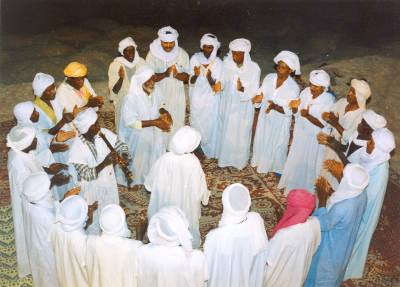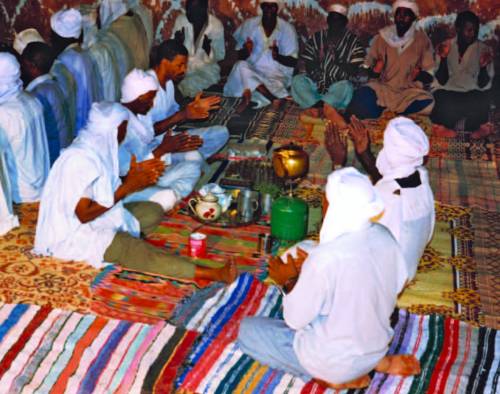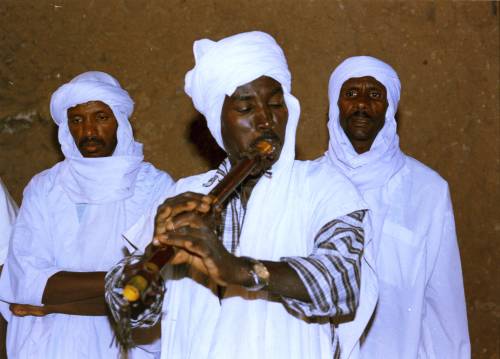Ahellil of Gourara
Inscribed in 2008 (3.COM) on the Representative List of the Intangible Cultural Heritage of Humanity (originally proclaimed in 2005)
Performed during collective ceremonies, the Ahellil is a poetic and musical genre emblematic of the Zenete population of Gourara. This region in southwest Algeria includes some one hundred oases populated by over 50,000 inhabitants of Berber, Arab and Sudanese origin. The Ahellil, which is specific to the Berber-speaking part of Gourara, is regularly rendered at religious festivities and pilgrimages as well as secular celebrations, such as weddings and community events. The Ahellil is closely linked to the Zenete way of life and its oasis agriculture, symbolizing the cohesion of the community living in a harsh environment and, at the same time, transmitting the values and the history of the Zenete population in a language that is at risk of disappearing.
Simultaneously interpreted as poetry, polyphonic chant, music and dance, this genre is performed by a bengri (flute) player, a singer and a chorus of up to a hundred people. Standing shoulder to shoulder in a circle surrounding the singer, they slowly move around him while clapping their hands. An Ahellil performance consists of a series of chants in an order decided by the instrumentalist or singer and follows an age-old pattern. The first part, the lemserreh, includes everyone and encompasses short, well-known chants that are sung late into the night. The second, the aougrout, concerns only the experienced performers who continue until dawn. The tra finishes with daybreak and involves only the most accomplished performers. This threefold structure is also reflected in the chant performance, which begins with a prelude by the instrumentalist, followed by the chorus picking up certain verses, and ending with it chanting in whisper and slowly building up into a powerful, harmonious whole.
This tradition is threatened due to the dwindling number of occasions on which it is performed. This decline is linked to the rarity of traditional festivities. The migration of young people to the cities and the prevailing preference to listen to widely available Ahellil recordings rather than actively participating in live performances.



